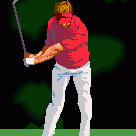IGNORED
Ball Held by Inner Cup Liner, Ruling? (Pictures Inside)
Note: This thread is 1975 days old. We appreciate that you found this thread instead of starting a new one, but if you plan to post here please make sure it's still relevant. If not, please start a new topic. Thank you!
-
Topics Being Discussed Right Now on The Sand Trap
-
"5 Minutes Daily" Practice Challenge 1 2 3 4 1024
By iacas, in Instruction and Playing Tips
- 5 minutes daily
- dedication
- (and 6 more)
- 18,431 replies
- 1,893,462 views
-
- 411 replies
- 124,077 views
-
Do Upgrade Shafts Provide a Significant Performance Gain?
By Huffy, in Clubs, Grips, Shafts, Fitting
- 10 replies
- 3,675 views
-
- 1 reply
- 2,462 views
-
- 4 replies
- 3,141 views
-








Recommended Posts
Create an account or sign in to comment
You need to be a member in order to leave a comment
Create an account
Sign up for a new account in our community. It's easy!
Register a new accountSign in
Already have an account? Sign in here.
Sign In Now